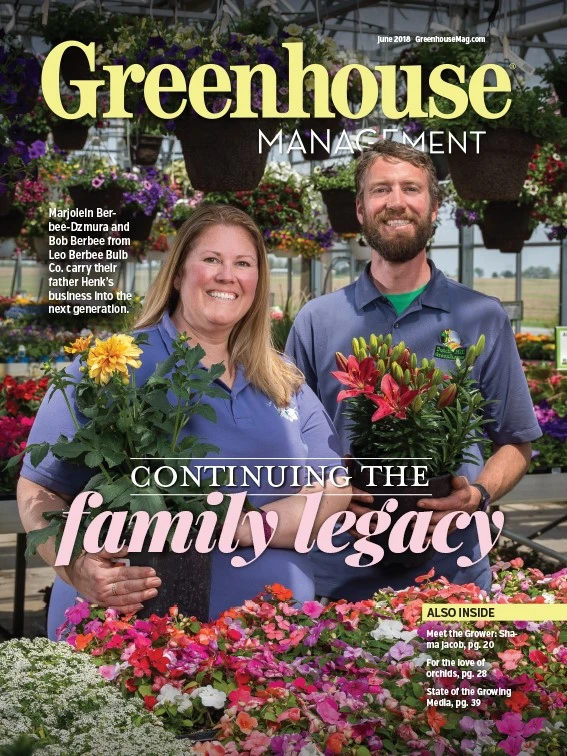
Usually, this Production Pointers column is focused on the more technical aspect of greenhouse crop production. When I got ahold of the editorial calendar and saw that orchids were going to be one of the features of this issue, I got excited. Oftentimes during my lectures or in laboratories, after sharing some unique fact related to the crop when I am teaching, I often tell students that “Plants are cool.” Or, I am saying it out loud to myself. That is because it is a sincere sentiment. It is the sentiment that got me into horticulture, and the one that keeps me going day in and day out. But it is not just that plants are cool. It is that they are curious, puzzling, beautiful, biological organisms that are rewarding to work with.
If I could credit one crop for cultivating my passion for plants, I would credit orchids. I have driven hundreds of miles across the country with an orchid-loaded back seat and boarded planes with flowering plants in my arms. I have hiked bogs in northern Minnesota to find the showy lady’s slipper, and the wettest tropical forest in Costa Rica to find a flowering Brassavola and smell it at night. If not for orchids, I may not be where I am today.
There is so much more to a plant than simply its appearance. There are stories embedded in the botany and history that come with every plant. Let’s use slipper orchids as an example. The scientific names for two genera of slipper orchids (Cypripedium and Paphiopedilum) refer to a tryst that Aphrodite and Adonis shared; when a mortal came upon one of Aphrodite’s shoes that were left behind, the slipper turned into an orchid flower so no proof could be found. Then there is the story about the collectors who discovered Paphiopedilum rothschildianum, a status symbol in high societies; they purposefully reported an erroneous location (New Guinea) as opposed to its true home, one of three sites on Mt. Kinabalu on the island of Borneo.

The physiology of plants is what makes producing and enjoying plants interesting. If we just look at the propagation alone, orchids are fascinating. Many orchids are propagated vegetatively using tissue culture or by division, but seed propagation is also widely used for breeding and conservation. To propagate orchids by seed, their microscopic seeds are germinated in aseptic culture using ingredients like smashed banana and coconut milk or are inoculated with mycorrhiza to form a symbiotic relationship. Beyond growing and producing these plants, their structures have stories to tell. While we stare at a slipper orchid in wonder, insects also may be a little confused, but by design. They smell a sweet odor emanating from the flower, crawl down into the pouch to investigate and, while climbing out after some disappointment, get some pollen stuck to their back, which is transferred to the next slipper flower playing the same trick.
While I am singing the praises of these plants, orchids aren’t the only plants that captivate people. In fact, orchids really aren’t even the point of this article. They aren’t the only plants with unique names, history, physiology or growing requirements. All plants have these stories to tell. It’s more the passion that orchids instilled in me that helped open my eyes to the wide world of plants. Working with commercial greenhouse growers and university students, one of the questions I want to ask is, “What is your ‘orchid’?” I want to know what inspired them to work with plants and what keeps them doing it. Share your knowledge and passion with people and get excited. After all, plants are cool!

Explore the June 2018 Issue
Check out more from this issue and find your next story to read.
Latest from Greenhouse Management
- North Carolina Nursery & Landscape Association announces new executive vice president
- Plant Development Services, Inc. unveils plant varieties debuting in 2025
- Promo kit available to celebrate first National Wave Day on May 3
- Applications now open for American Floral Endowment graduate scholarships
- Endless Summer Hydrangeas celebrates 20 years with community plantings
- Invest in silver
- Garden Center magazine announces dates for 2025 Garden Center Conference & Expo
- USDA launches $2 billion in aid for floriculture growers





